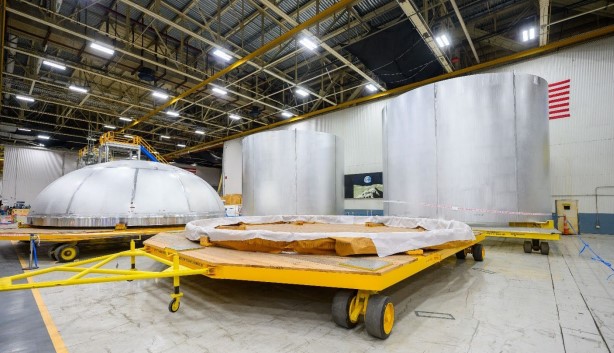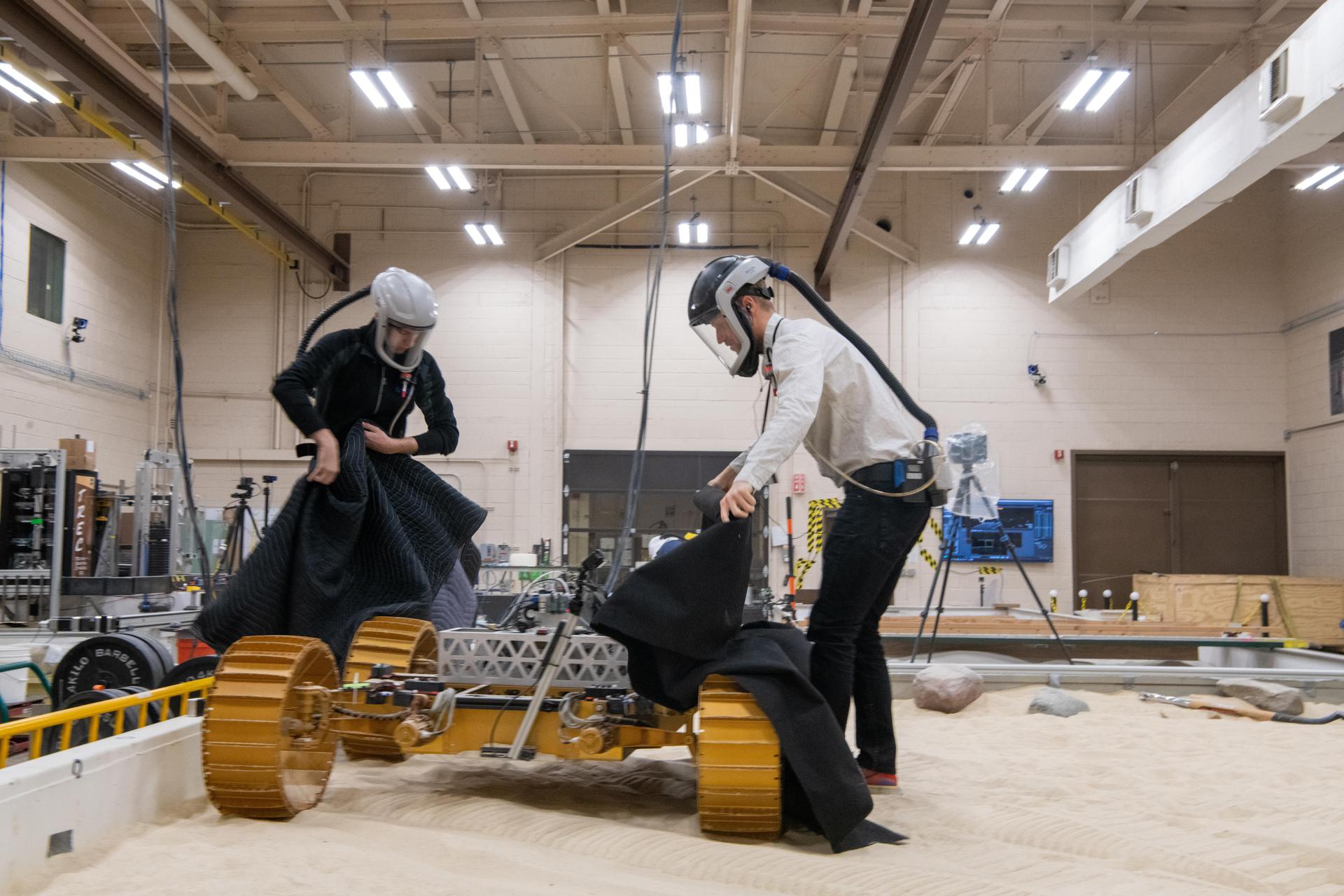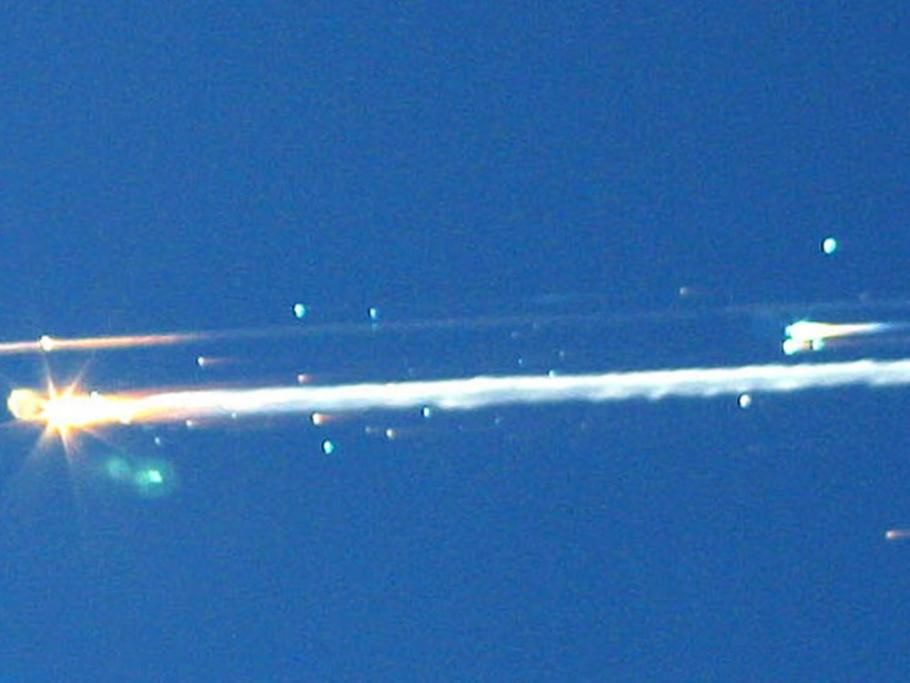In its quest to pursue manned space exploration to the Moon, asteroids and onwards to Mars, NASA began its Space Launch System heavy lift launch vehicle programme after Project Constellation was cancelled. While the initial Block 1 SLS design has been finalised and will be able to carry 70 tonnes to orbit, it was realised that at least 130 tonnes may be needed for actual manned exploration mission architectures. As such NASA intends to field later versions of the SLS using a pair of advanced boosters, more powerful than the initial SLS Block 1 version’s five segment solid rocket boosters currently made by ATK which were derived from Space Shuttle technology.
NASA has yet to decide whether it wishes to use a solid fuel or a liquid fuel booster. Before it decides on a final configuration, on 1 October NASA awarded contracts to demonstrate key booster technologies to help them choose between the competing designs and reduce the risk in building the final booster.
ATK proposed using an advanced version of this expendable booster which would use a new lightweight composite casing, and would use a higher energy HTPB fuel instead of the current PBAN fuel. At circa 4.5 million lb thrust (20.000kN) this new advanced solid booster is expected to produce about 40% more thrust than the Space Shuttle’s SRB. ATK received $51.3 million to construct and test elements of the oblique nosed booster including the composite case design, avionics and nozzle.
Dynetics, along with its Pratt & Whitney Rocketdyne partner, proposed a booster design using two improved variants of its F-1A engine, a throttleable version of the Saturn V derived F-1 engine. The team received $73.8 million to build and test key elements of their 1.8 million pound (8,000kN) engine including the gas generator and new simplfied turbopump assembly, and demonstrate new manufacturing processes for the combustion chamber and new injector plate.
In addition to new engines, NASA is interested in new tank technologies. As such, the final contract of $12.1 million was given to Northrop Grumman to demonstrate new techniques used in the production of composite fuel tanks including out of autoclave curing and in situ manufacturing.
A fourth contract is expected to be awarded to Aerojet to reduce the risks in the development of a new one million lb (4448kN) thrust dual-combustion chamber LOx/kerosene burning AJ-1-E6 engine via demonstrations of combustion stability in the new design.
The Aerojet bid surprised some. While the AJ-1-E6 (formerly nicknamed the AJ-1000) has a more efficent cycle than the Dynetics/Rockedyne F-1A design, it has less than 60% of its thrust, meaning that four engines will be needed on each booster as opposed to only two of F-1A derivatives. This has implications on cost.
Christopher Crumbly, NASA’s Manager SLS Advanced Development Office was careful to be unbiased in his comments with respect to merits of the competing teams: “The F-1 has great advantages because it is a gas generator is a very simple cycle.” said Crumbly.
“The Ox-rich staged combustion (of the AJ-1-E6) has great advantages because it has a higher Isp (Specific Impulse – a measure of rocket efficiency equivalent to the momentum change per kg of propellants). “The Russians have been flying Ox-rich for a long time”.
“Either one can work,” Crumbly added, before remembering to note: “The solids can work.”
The liquid teams hade made play of their higher performance which should make the SLS be able to lift 150 or more tonnes to low Earth orbit, promising more flexibilty for manned lunar and asteroid exploration and unmnanned exploration missions. In response, Donald Sauvageau, Director, Advanced Programs, ATK noted that 130 tonnes is the performance target set by NASA, and so long as that this was met it would be overall development and life cycle costs that counted in the competition.
“When you look at a given performance that they (NASA) need, it is going to be a very tight competition between liquid and solid boosters.” said Sauvageau.
When asked whether both liquid teams could compete on cost when compared to solid rocket boosters, Steve Cook. Director of Space Technologies, Dynetics, who used to run the now-defunct Ares launch programme for NASA, noted that their Dynetics/Rockedyne team would not be competing if it did not think that they could do it.
Cook further made the point that while liquids were preferable to solids on performance, super-high efficiency engines are not really needed for booster engines and it was thrust that counted.
“A gas generator is a much simpler engine,” said Cook, “The point is not just to have performance for performance sake, just performance to drive affordability.”
Christopher Sanders of the Strategy and Business Development NASA programmes section at Pratt and Whitney Rocketdyne commented on Aerojet competitor’s apparent weakness in needing four engines on each booster: “Four engines is not better from an affordablity point of view… We like two engines,” he said.
With respect to their own team’s bid, Cook hailed the reliability record of the past F-1 engine and noted that the many of the major elements of engine had kept to the same dimensions as past F-1 family to keep this reliability and avoid problems with combustion stability that can affect new designs.
While the Dynetics/Rocketdyne team remains a leading contender, some have expressed concerns over difficulties in recovering the tooling from drawings for the F-1A engines – a programme that ended in the 1970s. Sauders dismissed these. “Its been done before on the J-2X programme” he said.
While a decision on a which booster design NASA will procede will not take place until 2015 (and it may yet be a design not including one of these contenders – SpaceX comes to mind), if one of the two current “liquid bids” does win out against the ATK’s solid booster design, then which ever ‘liquid’ team is selected Aerojet is likely to be the winner anyway. That is, if Aerojet’s holding company GenCorp has its planned acquisition of Rocketdyne from United Technologies accepted.







